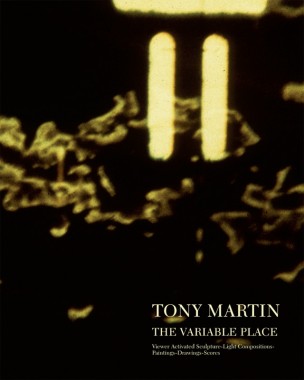
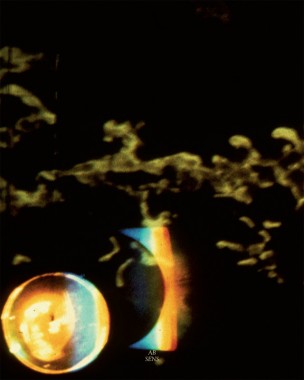
Tony Martin, The Variable Place
Edited by Camilla Padgitt-Coles and Nicky Mao
Softcover, 104 pp., offset 4/4, 8 x 10 inches
Edition of 350
Published by AB-SENS PRESS
$28.00 ·
Tony Martin arrived to San Francisco in 1962, promptly forging creative alliances and lifetime friendships with “new music” people Morton Subotnick, Pauline Oliveros, and Ramon Sender. When the San Francisco Tape Music Center moved to its location at 321 Divisadero St., Martin was invited by co-directors Sender and Subotnick to become the Visual Director. With special attention paid to working in the tape music medium, as well as performing regularly, they joined with Mills Center for Contemporary Music in ‘67. During the SFTMC days Martin was responsible for numerous visual compositions, including Terry Riley’s In C performance, as well as Sender’s Desert Ambulance. Martin was deeply engaged in experimenting with light via overhead and slide projectors, mixing paint, oil, water, and objects to build his light compositions. His following grew as a culture of psychedelia pervaded the 1960s and his light shows became popular amongst bands such as Jefferson Airplane and Grateful Dead. During this time he began to build “interactions” by engineering entire environments using sensors and mirrors. By the late ’60s he returned to New York City where he continued his focus for these types of installations; time and time again synthesizing his technological skills with painting as a moving image. A painter at heart, he continued with consideration of his experience working with his viewer-activated sculptures, as well as his devotion to the medium of light — maintaining a thread that binds all aspects of his work. His latest piece entitled Proximity Switched Installation (2012) is a clear culmination of a lifetime of experimentation/production. A video demonstration of this installation is available to view online and includes musical accompaniment by Compound Eye (Spring Press).
The Variable Place is the first book of its kind to tie together over 50 years of Tony Martin’s work. It includes an in-depth interview with Martin by Will Cameron, Albert Herter and the editors. As well as a special introduction by long-time friend/collaborator Pauline Oliveros.
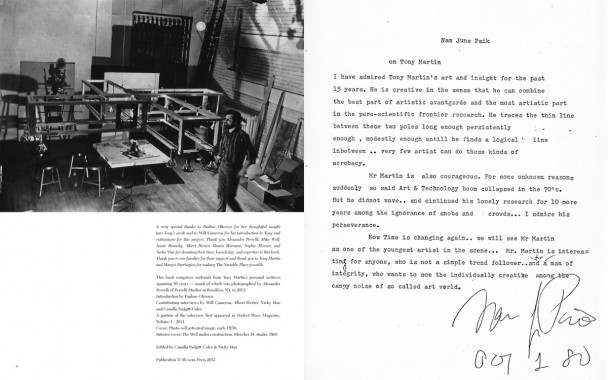
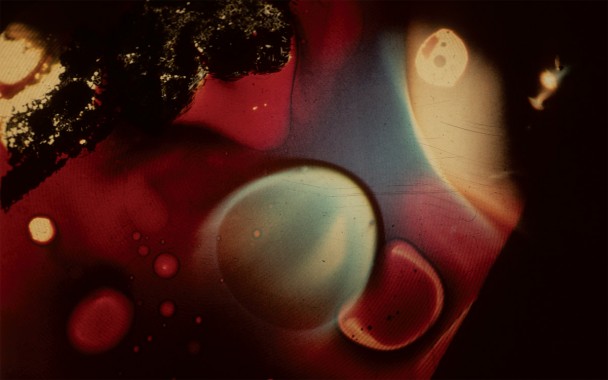
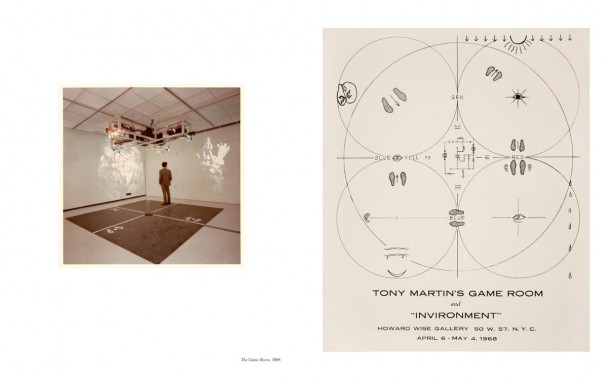
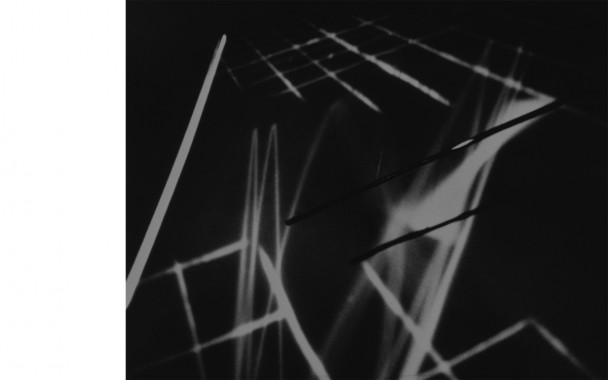
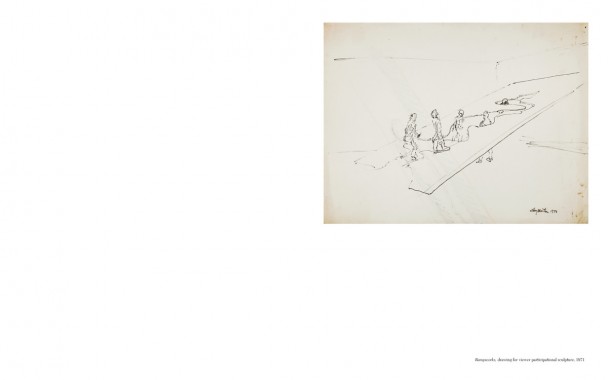
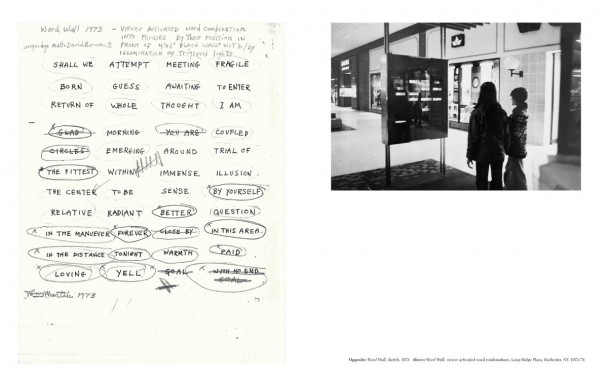
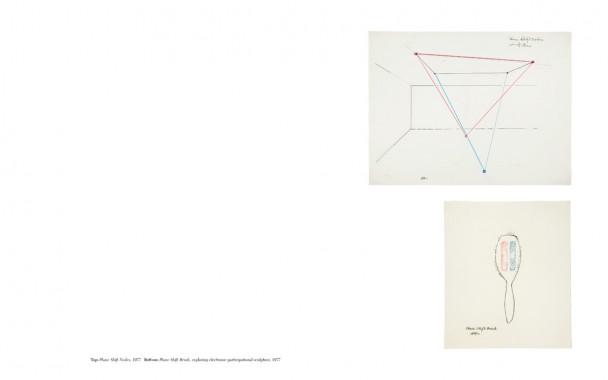
AB-SENS PRESS, Albert Herter, Art, Camilla Padgitt-Coles, Compound Eye, Culture, Design, Distribution, Morton Subotnick, Music, Nicky Mao, Pauline Oliveros, Performance, Photography, Ramon Sender, San Francisco, Terry Riley, Tony Martin, Will Cameron
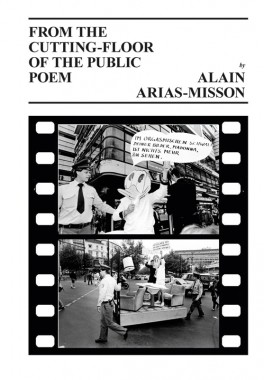
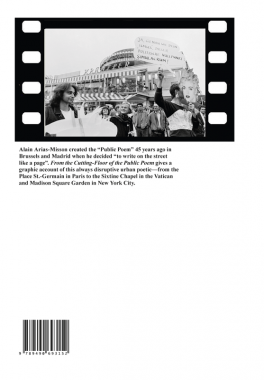
Alain Arias-Misson, From the Cutting-Floor of the Public Poem
Softcover, 80 pp., offset 4/1, 165 x 245 mm
Edition of 2000
ISBN 978-94-9069-315-2
Published by MER. Paper Kunsthalle
$32.00 ·
Alain Arias-Misson created the “Public Poem” 45 years ago in Brussels and Madrid when he decided “to write on the street like a page.” From the Cutting-Floor of the Public Poem gives a graphic account of this always disruptive urban poet — from the Place St.-Germain in Paris to the Sixtine Chapel in the Vatican and Madison Square Garden in New York City.
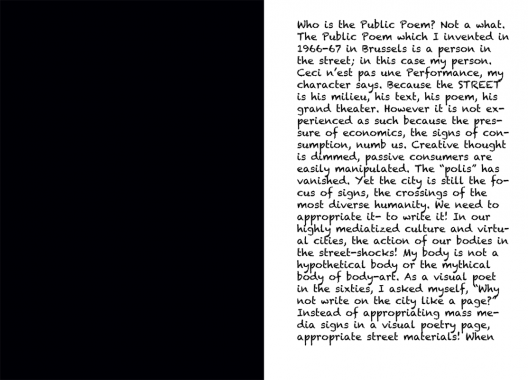
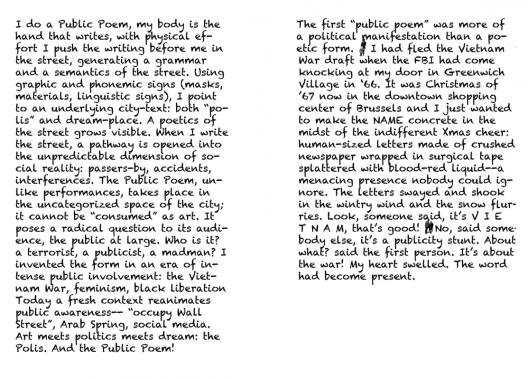
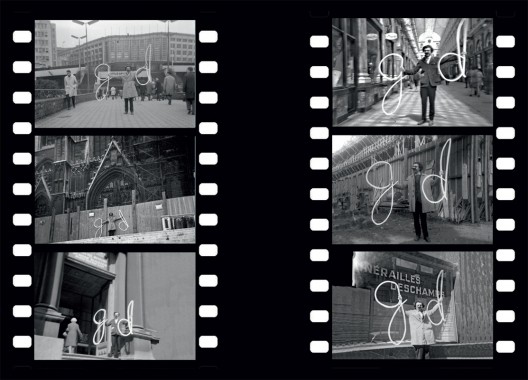
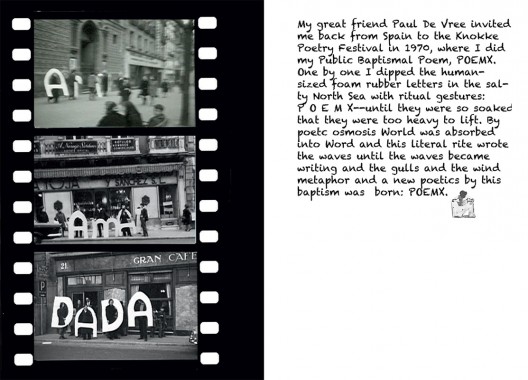
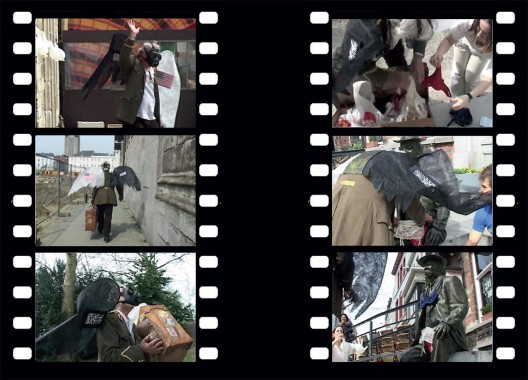
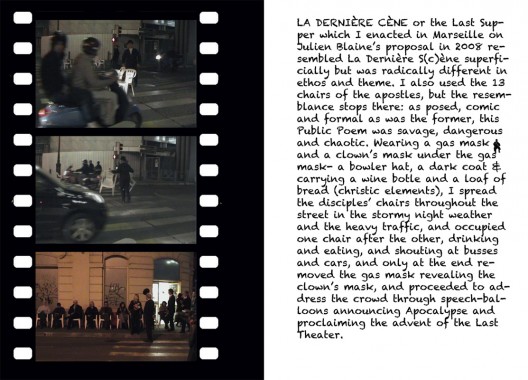
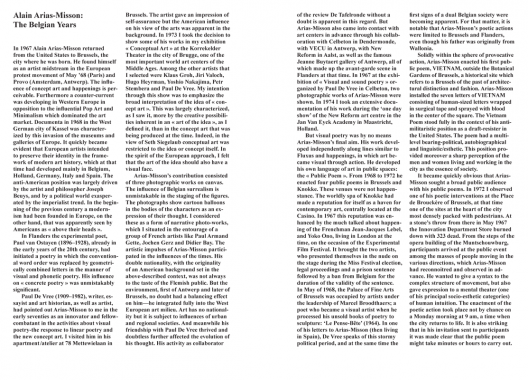
Alain Arias-Misson, Art, Distribution, MER. Paper Kunsthalle, New York, Performance, Poetry, Roger D'Hondt
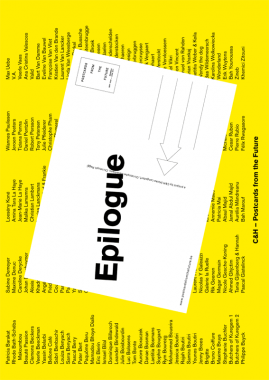
Heike Langsdorf, Christophe Meierhans and Christophe Ragg, Epilogue
Postcards from the Future
Softcover, 158 pp., offset 4/1, 170 x 240 mm
Edition of 2000
978-94-9069-355-8
Published by MER. Paper Kunsthalle
$28.00 ·
Epilogue retraces Postcards from the Future’s journey across the nine different city districts in which the project has taken place, each time involving its inhabitants and users in the realisation of a dedicated postcard/performance.
Postcards from the Future has taken place during an entire year, in collaboration with very diverse populations of the city, in places and at moments remote from another. This book takes up the challenge of gathering this multiplicity within a single bundled work, in order to give to all those who have taken part an overview of what the project has accomplished, partcipants in as much as audience members.
The book does not only document how these nine performances appeared in the visual realm of the city. Epilogue develops for each one of them the very thematic which has conditionned the most its realisation. The book portraits nine different interactions with the city, with its different neighborhoods, populations, infrastructures, administration, et al.
Just like any postcards, the Postcards from the Future are linked to the specific place they depict. What makes them special is that each one is associated with a precise point in time located in the future. Rather than being souvenirs, these postcards act primarily as invitations. By accepting the invitation and going to the address on the date and time indicated on a Postcard from the Future, one will be able to verify the prophecy made, thereby not only questioning the determinism, but also the pertinence of the images printed on the paper.
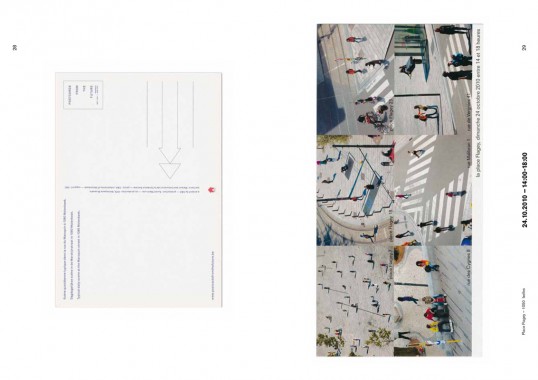
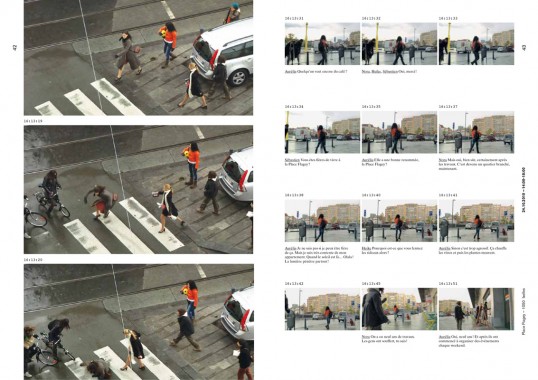
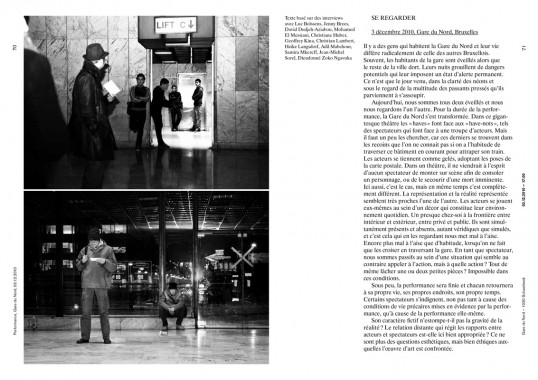
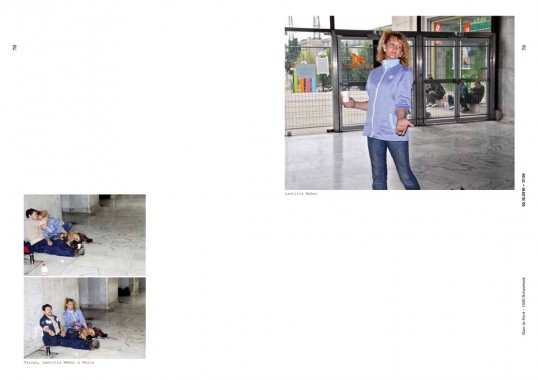
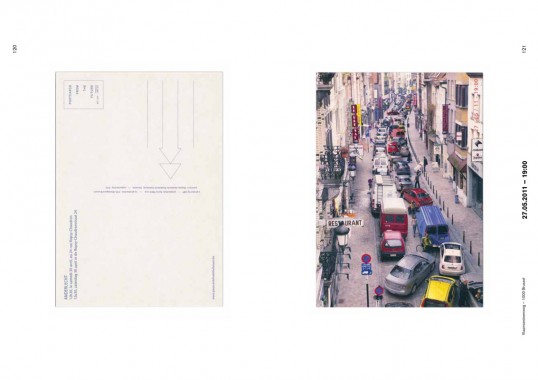
Art, C&H, Christophe Meierhans, Christophe Ragg, Culture, Distribution, Heike Langsdorf, Manuele Dechamps, MER. Paper Kunsthalle, Otamendi, Performance, Sébastien Hendrickx
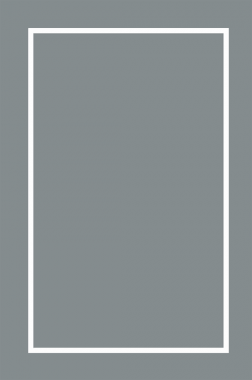
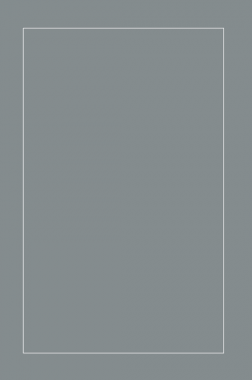
Tyler Coburn, I’m that angel
Softcover, 96 pp., offset 1/1, 6 x 9 inches
Book and performance
Edition of 500
Published by Tyler Coburn
$30.00 ·
I’m that angel is a cycle of writings and performances that explores the contemporary conditions of how we work on and against the computer, narrated from the cognitive cell of one highly neurotic user. The project considers the master narratives of technological and socioeconomic progress that have naturalized Web 2.0’s largely unprecedented user platform, as well as the pre-histories of the Millennial, the blogger and the prosumer: trenchant constituents of the digital public that figure into ongoing Western concerns with the relationships between sincerity and authenticity; realism and reality; the diaristic and the literary; and the author and the individual who nominates to take on, and produce under, that title.
Nodding to the defamiliarization strategies of Russsian formalists like Viktor Shklovskii, I’m that angel takes shape as a stony stone, a cut in the stream – a book. The format concretizes found quotes and other elements; and in every line, a pathology characteristic of our era. Call it inattentionality as method.
Designed by Eric Nylund, this book shores up the bibliographic and citational structures that underpin much of the Internet, as well as literary forms like the confessional and the epistolary that offer precedents for net vernacular. I’m that angel works to build an expanded form of the printed page that draws upon the computer screen’s predecessors: the exegetical framings of The Talmud, for example, and the columnar stutter of Derrida’s Glas. The work attempts, in short, to thread hypertext into a paraliterary matrix.
The second part of this project involves readings of the entire book, performed by actor Justin Sayre, at colocation centers worldwide. If the book sustains a material limit that belies the diffuse shape of the cloud, then these sited readings attempt to effect similar concretions by having author, actor and audience occupy a highly securitized, geopolitical and visual field that is rarely made available to the public. The first such performance occurred, over three nights in April 2012, in an all-glass, octagonal conference room, overlooking racks of servers, at Digital Realty in downtown Los Angeles.
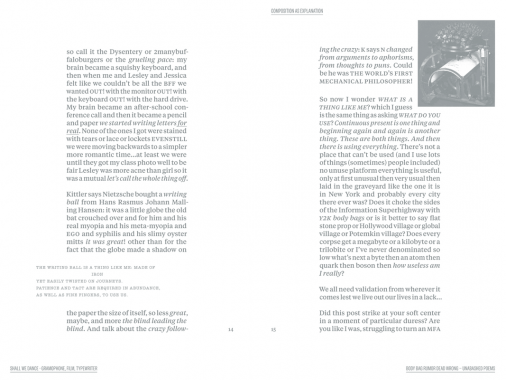
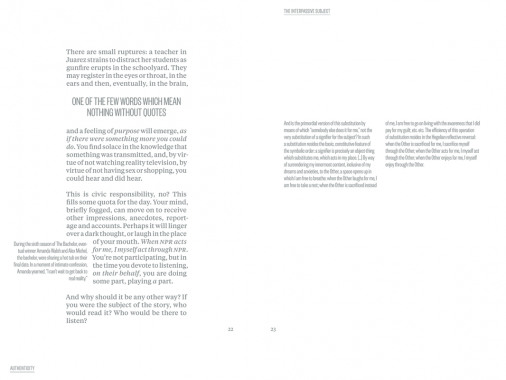
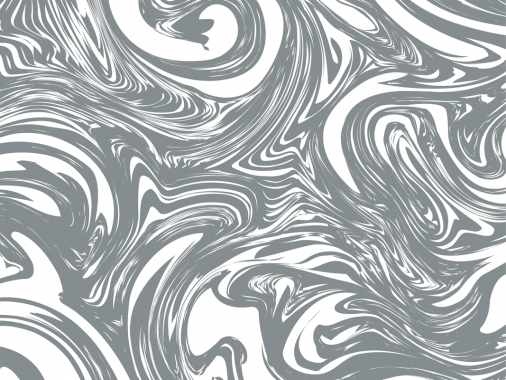
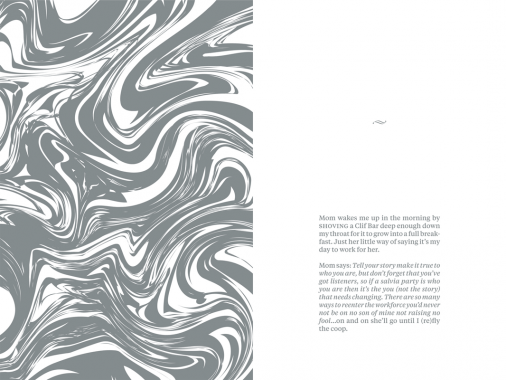
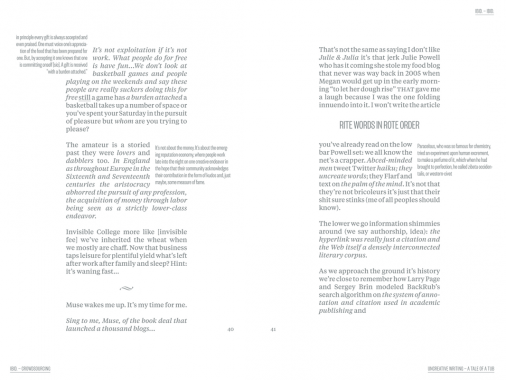
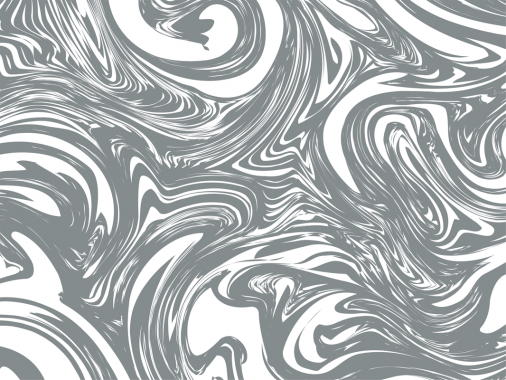
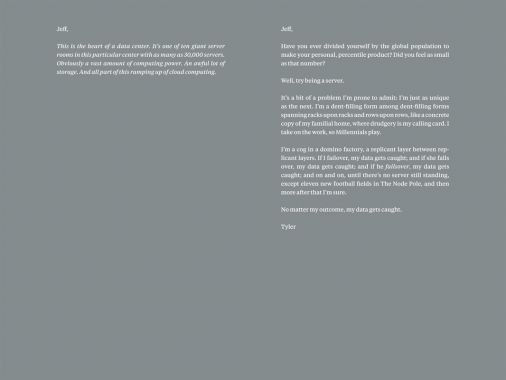
Art, Distribution, Eric Nylund, Joseph Portillo, Justin Sayre, Marc Rosenthal, Matthew Corwin, Performance, Roski School of Fine Arts, Tyler Coburn, Viktor Shklovskii
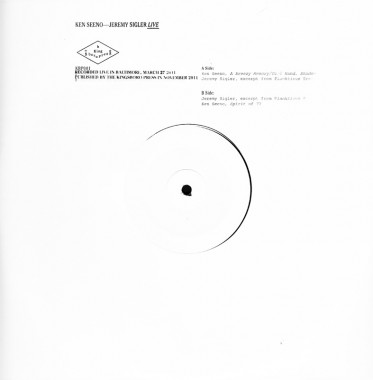
Ken Seeno and Jeremy Sigler, Live
12-inch vinyl record, silkscreened 1/1, 12 x 12 inches [12.75 x 12.75 in poly sleeve]
Edition of 150, numbered
Published by The Kingsboro Press
$25.00 ·
A side: Ken Seeno, A Breezy Memory/Cool Hand, Shadow; Jeremy Sigler, excerpt from Plankticus Erectus
B side: Jeremy Sigler, excerpt from Plankticus Erectus; Ken Seeno, Spirit of 77
Recorded in Baltimore in May 2011,
Live marks not only the first ever vinyl release from The Kingsboro Press, but also the first officially released project from longtime friends, colleagues, and schemers Seeno and Sigler. 3 tracks from Seeno (ex-Ponytail) highlight his uniquely ambient and immersive new age-tingled solo work, alongside 2 poems read from New York-based poet Sigler.
L.L. Being, an accompanying text (a dialogue between Sigler and Seeno that covers everything from
2 Fat Ladies and Being There, to Windham Hill and khakis) is available
here .
Art, Distribution, Jeremy Sigler, Ken Seeno, Music, Performance, The Kingsboro Press, Windham Hill
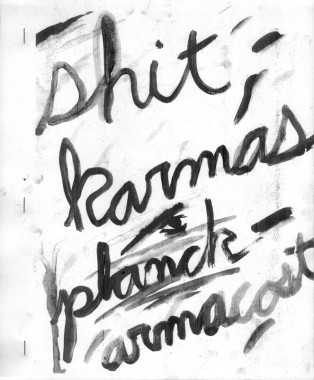
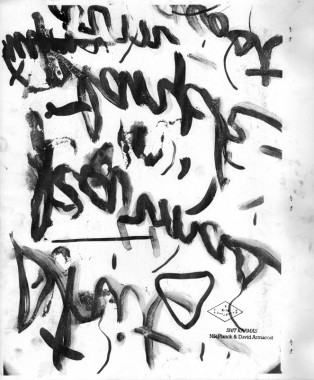
David Armacost and Nik Planck, Shit Karmas
Stapled w/ clear poly sleeve*, 12 pp., mimeograph 1/1, 10.75 x 12 inches
Edition of 75
Published by The Kingsboro Press
$8.00 ·
A new collaborative artists book from Baltimore-based painters Armacost and Planck. Sourcing their longstanding and fervent correspondence,
Shit Karmas scrutinizes all elements of artistic practice, from grandiose pursuits to foolhardy routine. Deeply rooted in painting, Armacost and Planck have etched out a collaborative process in which every element informs the next, and drawings and paintings are endlessly referenced and parodied in a seemingly-endless back and forth interchange between artists.
*Note: mimeograph printed on matte coated paper (ink may transfer during handling).
Art, David Armacost, Distribution, Nik Planck, Performance, The Kingsboro Press
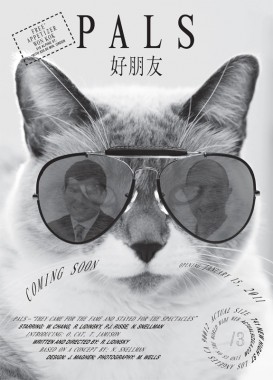
Richard Lidinsky and Jonathan Maghen, PALS (Coming Soon)
Océ print/poster, 1/0 on pink paper, 20 x 28 inches [21 x 29 inches framed*]
Edition of 3 + 2 proofs, numbered
Published by Textfield
$123.00 ·
Collaboration with Richard Lidinsky and design of poster/edition for the exhibition
PALS.
Pals (full title: Pals for Life / Life for Pals) is a teleplay about the dialectics of friendships under the strain of artistic endeavor. Shot principally in January 2011 at the Actual Size gallery in Los Angeles’ Chinatown, the approx. 34-minute video — told from the point of view of a traditional studio audience television program — revels in the angst and emotion of 4 friends/lovers who must install their respective art works in the presence of frenemies large and small. Each Pal is named after a specific human being, though the story implies that these pals are simple archetypes from a vast universe of narcissistic micro-movements.
*PALS (Coming Soon) print/poster ships unframed; trim size is an exact fit for this frame.
Art, Cats, Culture, Distribution, Exhibitions, Jonathan Maghen, Michael Wells, Natascha Snellman, Orson Cat, PALS, Performance, PJ Risse, Posters, Richard Lidinsky, Textfield, Tyler Jamison, Typography, Wilson Chang
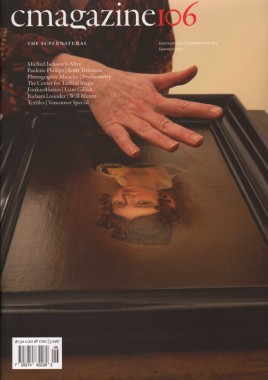
C Magazine 106, The Supernatural
Softcover, 64 pp., offset 4/1, 210 x 295 mm
Edition of 2000
ISSN 1480-5472
Published by C Magazine
$7.50 ·
Issue 106 includes feature articles by Jennifer Fisher on psychometry, Lynn Crosbie on Michael Jackson, and Louis Kaplan on Nate Larson’s photographic miracles; David Lillington interviews Paulette Phillips, and Leah Modigliani interviews The Center for Tactical Magic; book and exhibition reviews from Antwerp, Chicago, Toronto, Edmonton, Victoria, Charlottetown, Stratford Ontario, McIvers Newfoundland and Ridgefield Connecticut, with a special section covering Vancouver during the 2010 Winter Olympics; artist project by Scott Treleaven, accompanied by an essay by Elijah Burgher.
Aaron Peck, Amish Morrell, Art, Bruce LaBruce, C Magazine, Christopher Olson, Criticism, David Lillington, Distribution, Elijah Burgher, Holland Gidney, Jennifer Fisher, Jesse Birch & Jesse Grey, Joni Low, Liz Parks, Louis Kaplan, Luis Jacob, Lynn Crosbie, Paulette Phillips, Performance, Photography, Rachelle Sawatsky, Richard Ibghy and Marilou Lemmens, Sarah Aranha, Scott Treleaven, the Center for Tactical Magic, Theory
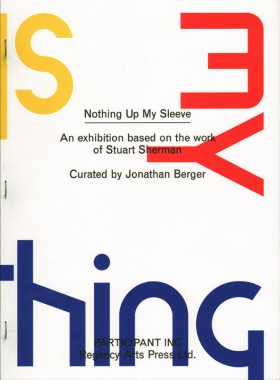
Jonathan Berger, Nothing Up My Sleeve
Softcover, 160 pp., offset 4/1, 8.5 x 11.5 inches
Edition of 1000
ISBN 978-098023-241-7
Published by Regency Arts Press, Participant Inc.
$20.00 ·
Nothing Up My Sleeve: An Exhibition Based on the Work of Stuart Sherman, is a curator’s book co-published with the New York not-for-profit space, Participant Inc. The exhibition, curated by Jonathan Berger, took place at Participant Inc. in the winter of 2010.
Berger paired the work of Stuart Sherman, a brilliant performance artist who died in 2001, with other performers and artists whose work, while not directly affected by Sherman, shares a similar spirit and exploration of authenticity. The book is an extension of the exhibition, composed of entries from each performer/artist included in the show: Matthew Brannon, Carol Bove, James Lee Byars, Vaginal Davis, Harry Houdini, Andy Kaufman, and several others. Reprinted in the book, with new commentary, are two early critical texts about Stuart Sherman’s spectacle works, by John Matturri (written in 1978), and Berenice Reynaud (published in issue eight of October art journal, 1979). There are also texts by Lia Gangitano, Jonathan Berger, Molly McGarry, and Mark Bradford.
Andy Kaufman, Art, Berenice Reynaud, Carol Bove, Distribution, Harry Houdini, James Lee Byars, John Matturri, Jonathan Berger, Lia Gangitano, Mark Bradford, Matthew Brannon, Molly McGarry, Participant Inc, Performance, Regency Arts Press, Stuart Sherman, Vaginal Davis
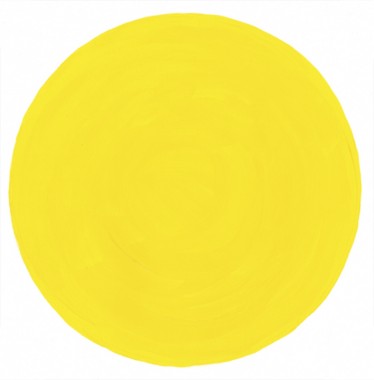
Cranfield and Slade, 12 Sun Songs
Hardboard/sleeve, yellow vinyl record + poster, offset 2/1, 315 x 315 mm
Edition of 2000
ISBN 978-3-03764-063-0
Published by JRP|Ringier, CK editions
$20.00 ·
Cranfield and Slade: 12 Sun Songs is a yellow vinyl album made up of covers of pop songs about the sun. Aping a 1970s concept album, Cranfield and Slade present twelve songs arranged to represent a day, beginning with songs about sunrise and winding down with songs about sunsets. Tracks range from classics such as George Harrison’s
Here Comes the Sun and The Kinks’
Waterloo Sunset, to the lesser-known
Sun by singer-songwriter Margot Guryan or
Where Evil Grows by Vancouver’s The Poppy Family. The album combines field recordings made in various Vancouver locations with electronic sound and acoustic and electric instruments. The liner notes for “12 Sun Songs” were written by celebrated Canadian poet and critic Peter Culley.
Based in rainy Vancouver, Cranfield and Slade is made up of visual artist Kathy Slade and artist/musician Brady Cranfield, working with musicians including Larissa Loyva (Piano, Kellarissa), Johnny Payne (Victoria Victoria, The Shilos), and Chris Harris (Piano, Parks and Rec, The Secret Three, Womankind); and special guests John Collins (The New Pornographers, The Evaporators) and artist Rodney Graham (The Rodney Graham Band, UJ3RK5).
Art, Chris Harris, Christoph Keller, CK editions, Cranfield and Slade, DAP, George Harrison, John Collins, Johnny Payne, JRP|Ringier, Larissa Loyva, Margot Guryan, Music, Performance, Peter Culley, Rodney Graham
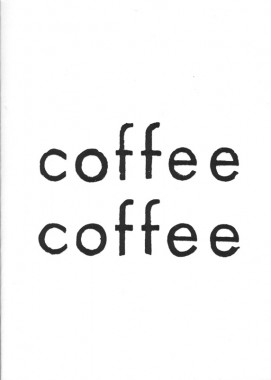
Aram Saroyan, Coffee Coffee
Softcover, 88 pp., offset 1/1, 5 x 7 inches
Edition of 1000
ISBN 978-0-9788697-5-5
Published by Primary Information
$10.00 ·
Infamous artist book by one of the 1960s most controversial poets.
Coffee Coffee was originally published as a mimeographed edition by Vito Acconci and Bernadette Mayer on their 0 To 9 press in 1967. True to Saroyan’s minimalist approach of the time,
Coffee Coffee’s pages contain one word (sometimes 2 and once or twice, 3), each pulling you to the next (revolving door-like). Selections from
Coffee Coffee appear in the recent anthology
Complete Minimal Poems (Ugly Duckling Presse) edited by Primary Information co-founder James Hoff; however, this is the first time that this work has appeared in its complete and initial form since 1967.
“In the late Sixties, when I called myself a poet, Aram was the poet I envied. Because you couldn’t be sure if he was fooling or if he had really gotten to all there is to get. Because while the rest of us tried to be verbs, like everybody told us to do, he had the nerve to stop at nouns. Because he took a deep breath and willed himself into the self-confidence of naming. Because it wasn’t ‘nouns,’ it was ‘noun,’ only one noun, because he boiled it all down to one. Because then he let himself go, he let himself stutter, he let the one go and let the one double and go out of focus: while the rest of us ran for our lives all over the place and over the page, his noun shimmered and breathed and trembled and moved-shh! softly, softly-from within.”
—Vito Acconci
Aram Saroyan, Art, Bernadette Mayer, DAP, James Hoff, Performance, Poetry, Primary Information, Vito Acconci








































